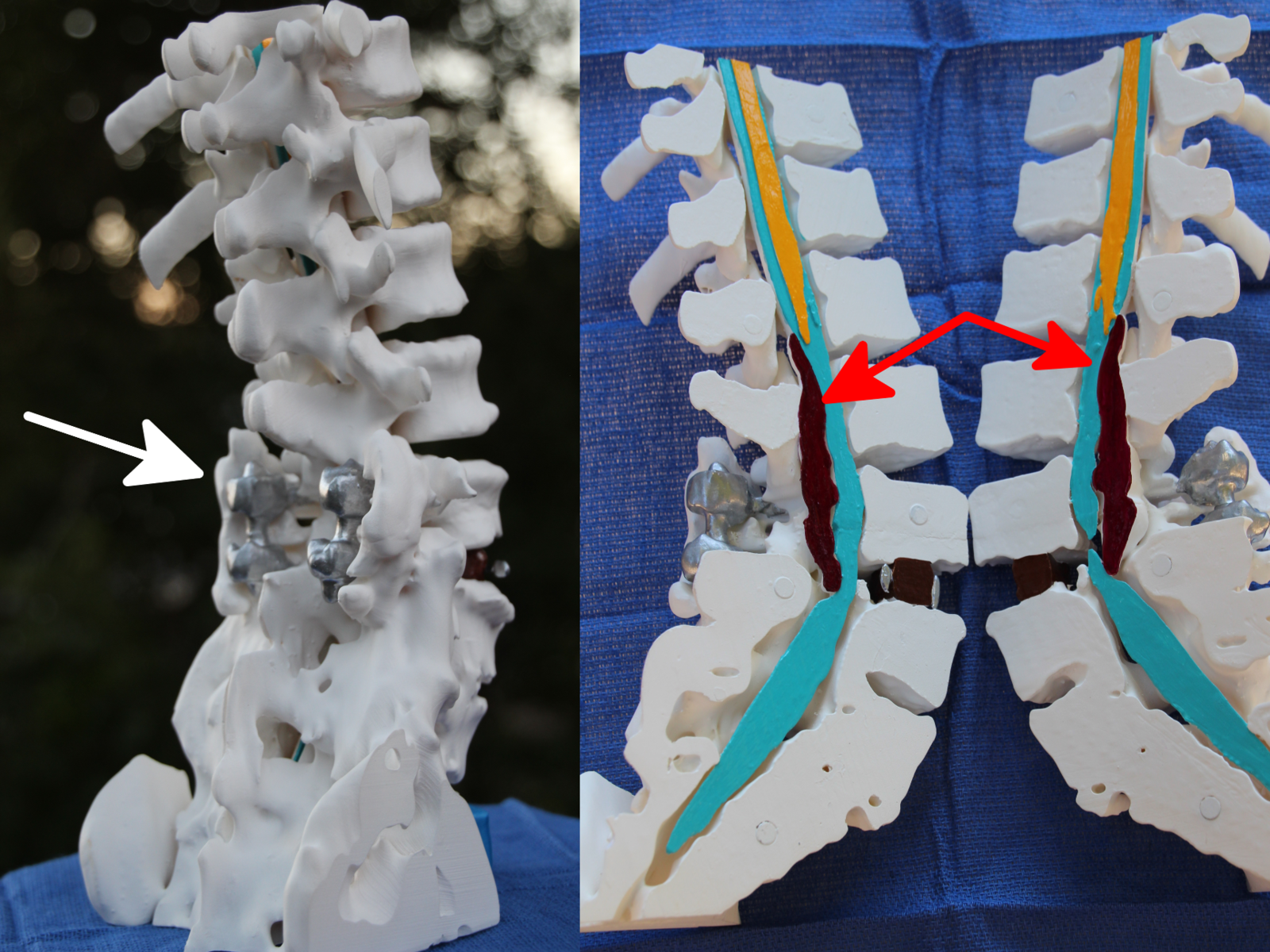3D Printed Medical Models for Trial Exhibits
Medical imaging is confusing for jurors and laypeople to understand. Make your medical imaging come alive with a custom 3D printed trial exhibit created from a medical scan. A 3D printed model can help convey an attorney's message to jurors far better than words or raw medical images. Understanding and recall is enhanced, and a good model can strikingly illustrate the medical facts at issue.

A 3D printed spine malpractice trial exhibit. The patient had a lumbar fusion performed (left, white arrow). The surgery was complicated by bleeding, which resulted in an epidural hematoma (right, red arrows), which caused compression of the spinal canal and paralysis of the legs. With this trial exhibit, this obscure imaging finding becomes easy for laypeople to understand.
Let Embodi3D's Medical 3D Printing Experts Help You
Embodi3D is a national leader in medical 3D printing. Our team is led by Dr. Michael Itagaki, MD, MBA. Dr. Itagaki is a board-certified radiologist and 3D printing expert. He is a pioneer in using 3D printed models to assist in vascular surgery. We can extract data from a variety of medical scans and 3D print in many materials and colors. Contact us for a consultation to see if we can help you with your case.

3D printed model showing a gunshot victim. Bullet tracts show the trajectory of the two bullets as they penetrated the skull.

Model showing a gunshot wound to the jaw. In this 3D printed model, the devastating effects of the bullet can be clearly seen in the shattered jaw. A large hole is present in the maxilla (upper jaw).
What do I Need Before Consulting You for My Case?
There are a few basic requirements that you will need to check before contacting us for a consultation on your project. Having these ready ahead of time will help us serve you quickly and efficiently.
- Do you have a 3D medical scan of the injury or abnormality? A CT (or CAT scan) or MRI is required. Regular x-rays or ultrasound scans won't work because they don't have volumetric 3D data.
- Is the abnormality or injury in question seen on the scan? If it isn't visible on the scan, we cannot make a 3D printed model from the scan that shows it.
- Is the scan of decent quality? If the scan is of low quality then the model will be of low quality. The model can only be made from the data in the scan. If the scan has limited data (e.g. low resolution), then the model will reflect that. If you want to learn more about scan quality, click here.
- Do you have the necessary budget for a custom designed and 3D printed model? Creation of a customized medical model is a time consuming process requiring specialists. After consulting with you to determine exactly what needs to be highlighted, our experts extract the necessary structures from the medical scan and create a digital model. That digital model is the modified as needed (sectioning, supports and other elements added), 3D printed, and postprocessed (sanding, painting, magnet insertion, etc). Cost is highly variable but ranges from several hundred to several thousand dollars.
- Do you require expert testimony? Unfortunately, Dr. Itagaki and other embodi3D 3D printing experts are unavailable for expert testimony.
We pride ourselves on creating medical models that are not only useful tools but also works of art, and are happy to offer this rare and highly specialized service. You are assured that the model will represent the medical facts in an intuitive, easy to understand fashion. Please contact us to discuss your case.
